tutorial, commentary, study resources, and web links
The Murders in the Rue Morgue (1841) is widely regarded as the first modern detective story. It is one of three pieces written by Edgar Allan Poe featuring his super-sleuth the Chevalier C. Auguste Dupin. The other two stories are The Mystery of Marie Roget (1842) and The Purloined Letter (1844).
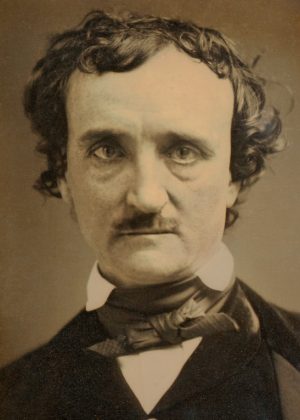
The term ‘detective’ had not been coined at the time Poe created his gentleman hero, and it is significant that Dupin does not think of himself as such. His general approach is to allow others to do the detection work – the police with their investigations and the newspapers in their reports. He then uses his sharper powers of ratiocination to analyse and re-interpret the information and draw from it more efficacious solutions..
The Murders in the Rue Morgue – critical comment
The locked room mystery
This story establishes a problem and a scenario which has become a stock-in-trade for writers of detective fiction ever since its first publication. That is – how is it possible for a murder to take place in a room which has been locked from the inside? Poe makes the problem even harder by situating the room on the fourth floor at the top of a tall building.
The police are baffled by this situation because they are searching for commonplace explanations: Dupin succeeds because he is prepared to think ‘laterally’ and entertain imaginative solutions. There is a little fictional ‘sleight of hand’ on Poe’s part, because he introduces new evidence to assist Dupin’s efforts – his discovery of hidden springs in the window casements. It’s not entirely clear what function these devices would perform on the fourth floor of a tall building.
It also has to be said that the principal solution to the mystery is rather far-fetched – an escaped Orang-Outang armed with a cut-throat razor who climbs up a lightning rod and murders two people. But the real interest in the story is not these Gothic and rather grotesque events, but Dupin’s method of detection, analysis, and problem-solving.
Dupin’s method
Poe creates a lot of lofty and complicated theorising on Dupin’s part to distinguish his methods of problem-solving from those of the police. But what his procedure boils down to is what Poe calls ‘ratiocination’ – which simply means clear, logical, and exact thinking. What Dupin emphasies in addition to this is his willingness to empathise with his antagonist. He puts himself into the frame of mind of those he is trying to ‘understand’.
It’s worth noting too that Dupin does not engage in lots of conventional crime detection activity. There is no undercover snooping, assuming disguises, or arranging stake-outs to catch culprits red-handed He uses the work of others – police and newspaper reports – and re-interprets the information they contain. This suits his style and manner of detached, aloof, cerebration. It is also where his emphasis on analysis comes into play. He looks at the same details, but puts himself into the frame of mind of someone else (the culprit) and tries to imagine what they might do. As he observes in a later story:
the proper question in cases such as this, is not so much ‘what has occurred?’ as ‘what has occurred that has never occurred before?’
Sherlock Holmes
It is quite clear that Edgar Allan Poe’s character the Chevalier C. Auguste Dupin was the original model for Arthur Conan Doyle’s detective Sherlock Holmes. Both characters have upper class origins, but have fallen on hard times. Both of them are forced to share lodgings with the narrator, where they enjoy a slightly reclusive bohemian lifestyle.
Both Dupin and Holmes operate as ‘gentleman detectives’ of an amateur variety, but outwit the police. Both of them are ferociously learned and fanatically concerned with details. They both smoke meerschaum pipes, and they are both single men with refined tastes and a penchant for making witty, sardonic remarks. They also have a habit of rounding off their case summaries with some sort of epigram or quotation.
It is not possible to copyright fictional characters or plot devices, but Conan Doyle comes very close to plagiarism so far as his central character is concerned – and the method of detection he uses.
Conan Doyle elaborated his appropriation of Poe’s original idea to produce an amazingly successful series of stories. Sherlock Holmes was even brought back from the ‘dead’ by public demand when Doyle tried to bring the series to an end. But the original concept of the intellectual super-sleuth belongs to Edgar Allan Poe.
The Murders in the Rue Morgue – study resources
![]() Poe: The Ultimate Collection – Amazon UK
Poe: The Ultimate Collection – Amazon UK
![]() Poe: The Ultimate Collection – Amazon US
Poe: The Ultimate Collection – Amazon US
![]() Poe: Collected Tales – Penguin – Amazon UK
Poe: Collected Tales – Penguin – Amazon UK
![]() Poe: Collected Tales – Penguin – Amazon US
Poe: Collected Tales – Penguin – Amazon US
![]() Tales of Mystery and Imagination – Kindle illustrated – UK
Tales of Mystery and Imagination – Kindle illustrated – UK
![]() Tales of Mystery and Imagination – Kindle illustrated – US
Tales of Mystery and Imagination – Kindle illustrated – US
The Murders in the Rue Morgue – story synopsis
An un-named narrator discusses the skills required to play chess, draughts, and whist – arguing that true analysis requires powerful observation, acute memory, and a rigorous attention to details.
He meets Auguste Dupin and rents an old house where they live together in a bohemian manner, largely late at night. Dupin is unusually observant and analytic. He demonstrates his his power of tracing a line of connections.
They read in a newspaper an account of the brutal murder of an old woman and her daughter. The room where the murders took place was locked from the inside and all the windows here closed. There appear to be no clues of explanations for the murders. Subsequent witness depositions establish that the old woman owned the building and lived a secluded life.
The witnesses give conflicting accounts of voices overheard and the language used. The woman withdrew 4,000 Francs from her bank three days previously. This was delivered to her in gold coins. by a bank clerk who has been arrested by the police.
Dupin and the narrator visit the scene of the crime, where Dupin makes a detailed examination of the outside and the inside of the house. He then goes into a period of deep reflection and says nothing until the following day.
Dupin then argues that it is the very unusual details of the crime which have baffled the police, but have led him to solve the problem. He then locates hidden springs in the window casements through which the assailants escaped. He also notices unusually wide shutters at the windows and and a lightning rod running down the rear wall.
He points to the fact that the gold was not stolen, the brutal ferocity of the attacks, and the powerful agility required to gain access to the attic rooms. He concludes from the marks of strangulation that the murderer was not human, and then from a detailed scientific description concludes that it must have been an Orang-Outang.
He has also found a fragment of sailor’s ribbon outside the house and has placed an advert in a newspaper offering the return of the Orang-Outang to its rightful owner.
A French sailor appears in response to the advertisement. He explains that he brought the Orang-Outang back from Borneo. It escaped from his lodgings and climbed up to the rooms where the old woman and her daughter lived. The sailor followed and witnessed the murders. All of this is reported to the police; the bank clerk is released; and the sailor sells the Orang-Outang to the Jardin des Plantes.
© Roy Johnson 2017
More on Edgar Allan Poe
More on literature
More on the novella
More on literary studies
More on short stories

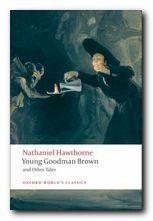
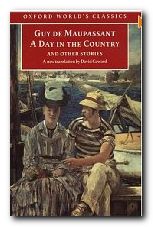

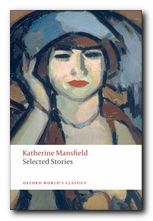 Katherine Mansfield
Katherine Mansfield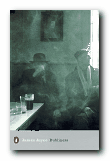
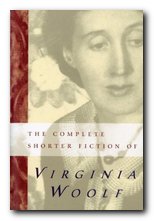
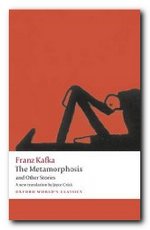

 Nadine Gordimer
Nadine Gordimer